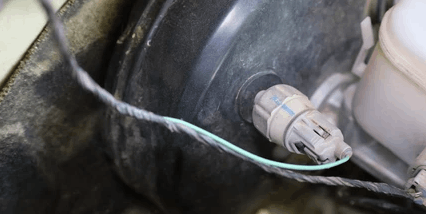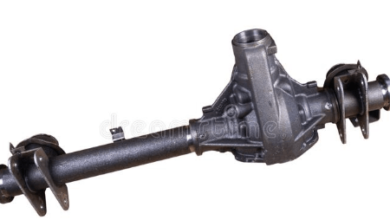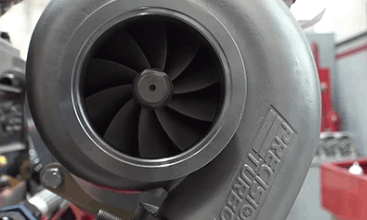Brake Booster Check Valve – A Complete Guide
Check valves have a very important duty in different kinds of systems. These systems include different kinds of applications in general. One of these applications is the brake booster system. Here, you can find detailed information about the brake booster check valve.
What is a Brake Booster?
Before understanding the brake booster check valve, we need to understand the brake booster system. As you understand from its name, the brake booster system is a special system that helps you about the braking your car.
If we take a look at the mechanism, there is a chamber divided by a diaphragm. Two sides of these diaphragms are vacuumed. The vacuum effect takes place with the connection of the vacuum chamber to the intake manifold. The downside movement of the pistons takes the air inside the chamber to create a vacuum area.
When you push your brake pedal, you push the diaphragm. Once you push the diaphragm of the chamber, the brake piston side fills with atmospheric pressure. And another side is in the vacuum phase. Because of this pressure difference, the diaphragm forces the brake fluid with a much higher force to create much higher braking.
Working Principle of Brake Booster Check Valve

Once you push the brake pedal, the check valve between the atmosphere and the first vacuum chamber opens. And atmospheric pressure fills inside the first chamber. And the same check valve closes the connection between the second vacuum chamber and the first chamber in this case. So, a great force takes place on the diaphragm because of this force difference.
The connection between these two chambers makes it possible to vacuum the air inside the first chamber after you take your foot from the brake pedal. And in this case, the brake booster check valve opens the connection between the two chambers and closes the connection between the atmospheric pressure and the first chamber.
So, this is the general working principle of the brake booster check valve. As you understand that it has a very important job.
Bad Brake Booster Check Valve Symptoms
So, this brake booster check valve can have different problems. And you need to solve these problems to obtain the first performance from your engine.
- Hard brake pedal: Once there is a problem with the brake booster check valve, the brake pedal will get harden. The reason behind this is very simple. Because the brake booster system will not work as intended. And you will feel much more force on the pedals.
- Weak braking: Also the braking performance will reduce. Because you lose the power that makes it possible to brake with very less effort.
- Sinking brake pedal: If the brake booster check valve can not close the atmospheric air connection with a vacuum chamber, the brake pedal can stuck.
- Engine stall: Even engine stalls may take place because of this situation. Because the engine cylinders are taking the air of the vacuum chamber to create a vacuum. And if there is a constant and extra air supply to the engine system, a stall may take place because of insufficient fuel to that air. So, it is very important to have a sufficient amount of air.
What are the Reasons that Brake Booster Check Valves Goes Bad?
There are different reasons that the brake booster check valve goes bad. One of these reasons can cause the symptoms that we explained.
- Wear: The most common reason the brake booster check valve goes bad is wear. Wear generally take place because of excessive use. And also if you use the brake booster for very long times, wear in the valve system can take place. And the valve can not make the sealing duty.
- Contamination: If you are driving your car in bad weather or filthy weather, very bad contamination would take place. Because of the contamination, the valve system can not make its duty. Sometimes the solution can just be cleaning the system.
- Heat: Once you use the brake system excessively, heat build-up can be a problematic issue in general. And this heat can cause the deterioration of valve systems in general.
- Chemical damage: Cleaning agents can cause damages also. And also unknown fluids can cause different kinds of damage to the valve systems in general. It will be very important to check if any chemical damages took place in the valve application.
So, these are the general reasons why you have damage to the valve structures. And it will solve your problems in general.
Different Ways to Fix
- Cleaning: As you see above, some of the problems may arise because of debris and contamination. And cleaning the system can solve the problem.
- Vacuum hose check: Also you need to check the vacuum hose if there is a leak or something. You can be sure about the problem is the check valve.
- Replacement: In most cases, the replacement of the brake booster system is direct. This is generally the most expensive solution that you can apply to this problem.
Replacement Prices
Giving exact price ranges is generally not an easy thing to consider. Because the price may vary because of various kinds of factors. Around these factors, the model and the brand of the car and other kinds of things can be considered.
The price range of the replacement may reach up to $500 for passenger cars. And if you have an average passenger car, this price will be around $250.
Replacement Tips
First of all, if you are not familiar with car mechanics, and if you do not have the basic tools to deal with these systems, do not attempt to change. Because the braking system is very critical. And if you make a mistake, the consequences can be very bad. But we can give you some tips about this thing.
- Finding the brake booster check valve is very important. You need to follow the vacuum hose which is attached to the intake manifold. At the end of the vacuum hose, you will see the brake booster system. The valve is attached to the pedal side of this system.
- You will need a wrench and pliers to remove the old valve. You need to loosen the hose clamps, and you need to gently remove the valve.
- After removing it, you may see debris accumulation in there. Clean this debris gently.
- Install the new valve and attach the hose back. Run the engine and test the braking performance.
- Do not hesitate to look at the user’s manual of your car when you are in trouble.
But it will be a much better idea to bring your car to a service to deal with the brake booster system.
Conclusion
We tried to explain all the important points about the brake booster check valve application. We wish that we helped you in this situation. If you have additional questions about this topic, please leave them below.
Your precious feedbacks are very important to us.
Check the related topics about braking systems of cars;



